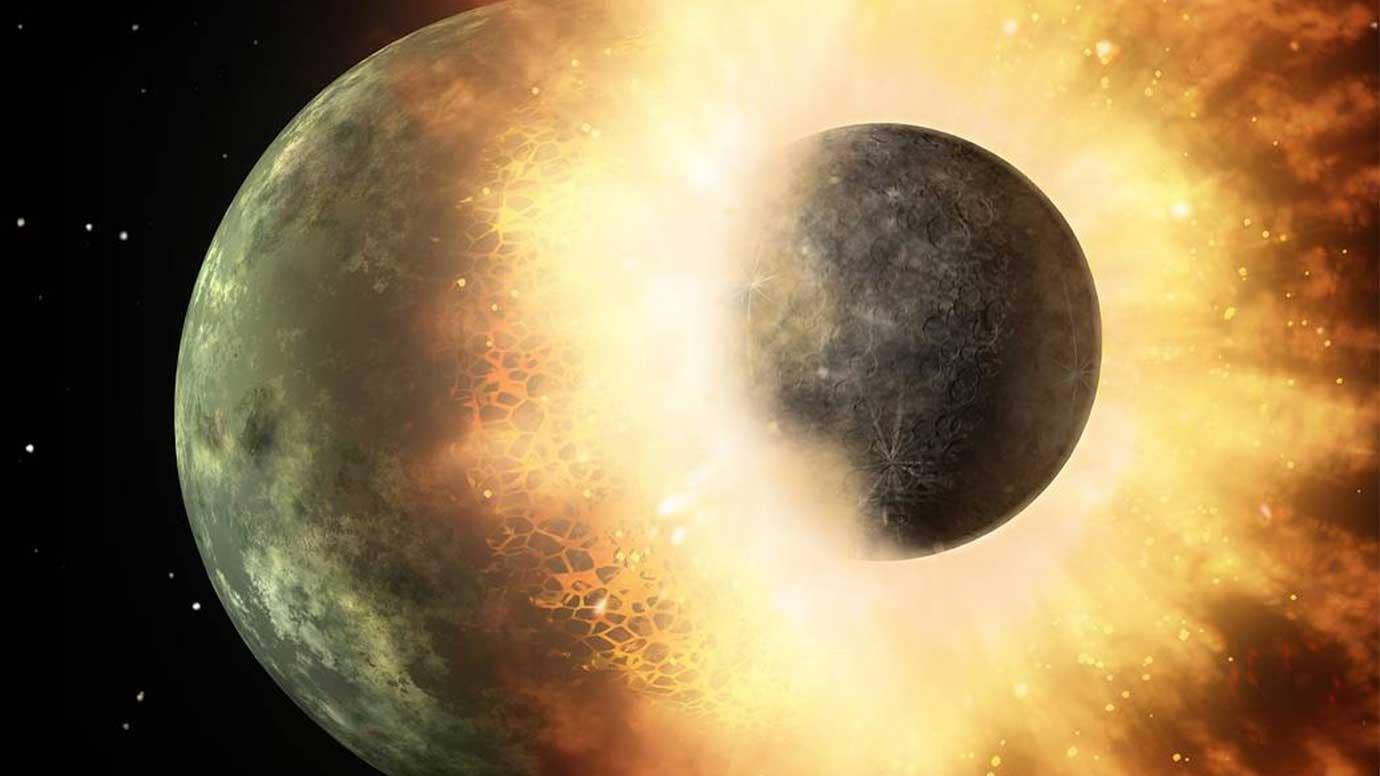Gigantic crater 3x larger than the Grand Canyon discovered in U.S.
About 35 million years ago, this catastrophic event triggered fires, earthquakes, molten glass droplets, an air blast, and a massive tsunami.

The location of the crater in Chesapeake Bay. It is now completely covered by younger sediments, but was discovered in the early 1990s by marine geophysical surveys and subsequent drilling. (CREDIT: Powars et al. 2015, Christoph Kersten / GEOMAR)
About 35 million years ago, an asteroid collided with the ocean off the East Coast of North America, creating a 25-mile diameter crater now buried beneath the Chesapeake Bay in Virginia and Maryland. This catastrophic event triggered fires, earthquakes, molten glass droplets, an air blast, and a massive tsunami.
The "Chesapeake Bay impact crater," now entirely concealed, was discovered in the early 1990s through scientific drilling. It holds the title of the largest known impact crater in the U.S. and the 15th largest on Earth.
The asteroid impact also produced an ejecta layer, which includes tektites (natural glass formed from meteorite impacts) and shocked zircon crystals that were thrown from the impact site. This layer, referred to as the "North American tektite strewn field," spans about 4 million square miles, roughly ten times the size of Texas. Some ejecta landed on land, while the rest cooled rapidly upon hitting seawater and sank to the ocean floor.
A research team, including Arizona State University's School of Earth and Space Exploration scientist Marc Biren, lead author, and co-authors Jo-Anne Wartho, Matthijs Van Soest, and Kip Hodges, obtained drilling samples from the Ocean Drilling Project site 1073 and dated them using the “uranium-thorium-helium technique” for the first time.
Their findings were recently published in Meteoritics & Planetary Science.
Related Stories
“Determining accurate and precise ages of impact events is vital in our understanding of Earth's history,” Biren said. “In recent years, for example, the scientific community has realized the importance of impact events on Earth’s geological and biological history, including the 65-million-year-old dinosaur mass extinction event linked to the large Chicxulub impact crater.”
The team focused on zircon crystals, which preserve evidence of shock metamorphism caused by the high pressures and temperatures of impact events. These crystals, about the thickness of a human hair, were central to their investigation.
“Key to our investigation were zircon — or more precisely: zirconium silicate — crystals found in oceanic sediments of a borehole almost 400 kilometers (250 miles) northeast of the impact site in the Atlantic Ocean,” said co-author Wartho, who started the study as a lab manager at the Mass Spectrometry Lab at ASU.
For this study, Biren collaborated with Wartho (now at GEOMAR Helmholtz Centre for Ocean Research Kiel), Van Soest, and Hodges to prepare samples for analysis and date zircon crystals using the uranium-thorium-helium method. Biren identified and processed shocked zircon fragments for imaging and chemical analysis with an electron microprobe.
“This research adds a tool for investigators dating terrestrial impact structures,” Biren said. “Our results demonstrate the uranium-thorium-helium dating method’s viability for use in similar cases, where shocked materials were ejected away from the crater and then allowed to cool quickly, especially in cases where the sample size is small.”
The study not only contributes to the understanding of the Chesapeake Bay impact event but also highlights the broader significance of impact events on Earth’s geological and biological history.
The ability to accurately date such events enhances our comprehension of their effects on the planet’s development and the history of life.
Note: Materials provided above by the The Brighter Side of News. Content may be edited for style and length.
Like these kind of feel good stories? Get the Brighter Side of News' newsletter.



